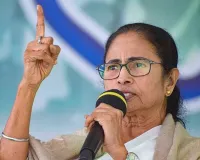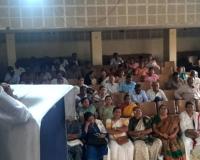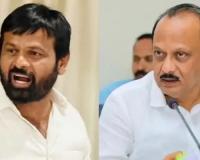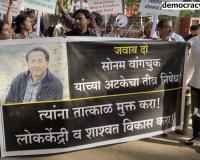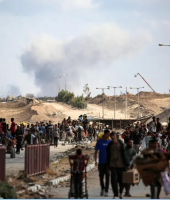- Editorial
- Editorial by Rahi Bhide | Uttar Pradesh and the Return of Caste Politics!
Editorial by Rahi Bhide | Uttar Pradesh and the Return of Caste Politics!
The Uttar Pradesh government’s ban on caste references in official records and caste-based rallies has sparked a fresh debate. While projected as reform, the move exposes contradictions in a state where caste arithmetic defines politics and governance alike.

By Rahi Bhidé
The Allahabad High Court, in a recent judgment, has pushed the Uttar Pradesh government to prohibit the mention of caste in official documents. The state has also moved to ban caste-based rallies and displays of caste pride in public spaces. On the face of it, this may appear as a progressive step towards dismantling regressive identities. Yet the irony is stark: every welfare scheme in Uttar Pradesh is structured on caste-based entitlement, and even the state machinery is engaged in caste-wise census exercises. The ruling party itself thrives on caste arithmetic. Chief Minister Yogi Adityanath, therefore, finds himself in the middle of a storm his government’s pronouncements and his party’s politics pulling in different directions.
Following the High Court’s directives, Chief Secretary Deepak Kumar issued ten sweeping instructions: caste rallies are banned, signboards and posters flaunting caste pride must be removed, stickers and slogans outlawed, and police records stripped of caste references. Even arrest memos and FIRs can no longer mention caste; mother’s names must be included alongside father’s in police records. Online portals must keep caste columns blank until systemic reforms are approved. The government argues these steps are essential to maintain public order and national unity. And indeed, they mark a bold move. But the contradiction is glaring what the BJP says in court and what it does in politics are worlds apart.
The trigger was a liquor smuggling case in which the police had needlessly mentioned the accused’s caste. The Allahabad High Court dismissed the accused’s petition but rebuked the state for such regressive practices. Now, while the court never ordered a ban on caste rallies, the government extended the logic to that sphere inviting backlash not only from opposition parties but also from within the BJP itself. Ministers and allies, many of whom built their careers on caste mobilization, have openly challenged the move.
That raises the critical question: what happens to the smaller caste-centric parties that orbit around the BJP? The Nishad Party, led by Sanjay Nishad, represents the Nishad community and is an NDA partner. The Suheldev Bharatiya Samaj Party of Om Prakash Rajbhar speaks for the Rajbhar caste and sits in Yogi’s cabinet. Jitin Prasada, once a Congress leader, rode on Brahmin mobilization before joining the BJP. These formations are living proof that caste remains the organizing principle of UP politics, and the BJP itself has historically thrived on precisely such mobilizations.
Consider the record: the BJP rose from 10 Lok Sabha seats in 2009 to 71 in 2014, and from 47 seats in the 2012 Assembly to 312 in 2017. Political analysts are near-unanimous that the secret was caste engineering bringing non-Yadav OBCs and non-Jatav Dalits under its fold, while portraying Yadavs and Jatavs as monopolizing state benefits. Before the 2022 polls, the BJP openly organized 23 caste conferences across the state; Deputy CM Keshav Prasad Maurya even addressed them. In 2019 and again in 2024, the BJP cultivated caste-based allies to expand its reach Apna Dal for Kurmis, Nishad Party for Nishads, Rajbhar party for Rajbhars.
But the strategy hit a wall in 2024. Akhilesh Yadav’s “PDA” formula uniting backward castes, Dalits, and minorities gained traction. Caste alignments shifted at the grassroots; non-Yadav OBCs and Dalits began deserting the BJP. The saffron party’s losses in 2024 were in large part due to this reverse consolidation. Against this backdrop, the government’s sudden ban looks less like a moral stand and more like an attempt to blunt PDA politics.
The irony, however, is bitter: a party that built its empire on caste mobilization now wants to erase caste symbols from public life. If implemented sincerely, the move could herald a long-overdue social reform. But if it is only tactical, it risks backfiring—undermining the very networks that the BJP painstakingly built over the past decade. In trying to control caste politics, the BJP may find that it is in fact cornered by it.
000


